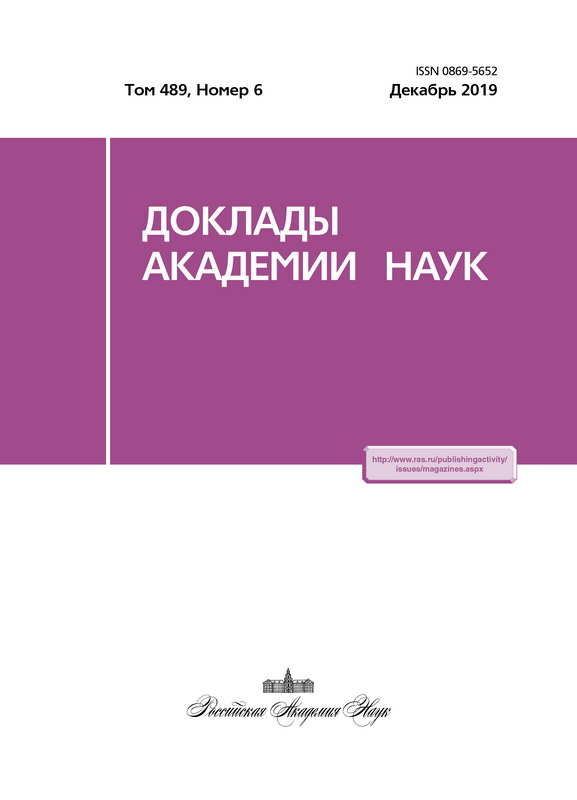Распределение TR2O3, P2O5 и Nb2O5 между двумя несмешивающимися расплавами в системе монацит-SiO2-NaF-Nb2O5-Fe2O3
- Авторы: Делицын Л.М.1
-
Учреждения:
- Объединённый институт высоких температур РАН
- Выпуск: Том 489, № 6 (2019)
- Страницы: 599-605
- Раздел: Химическая технология
- URL: https://journals.eco-vector.com/0869-5652/article/view/18864
- DOI: https://doi.org/10.31857/S0869-56524896599-605
- ID: 18864
Цитировать
Аннотация
Система монацит-SiO2-NaF-Nb2O5-Fe2O3 на изотерме 1200 °С характеризуется широкой областью двух несмешивающихся расплавов: силикатного и фосфатно-фторидного, солевого. Система является взаимной с образованием в солевом расплаве новых редкоземельных фаз: двойных фосфатов и фторидофосфатов РЗЭ и Na, в составе которых нет Fe и Nb. Железо оказывает большое влияние на несмесимость расплавов: при отсутствии железа область ликвации занимает 50% площади диаграммы, при 5% Fe2O3 - 57%, при 10% Fe2O3 - 70%. Оксиды РЗЭ, Р и Nb контрастно распределяются между несмешивающимися расплавами. РЗЭ и Р на 95% концентрируются в фосфатно-солевом расплаве. Nb концентрируется в железо-силикатном расплаве. При отсутствии в силикатном расплаве Fe2O3 содержание Nb2O5 равно 4,91%, при 15,33% - 6,89%, т.е увеличилось на 40% отн.
Об авторах
Л. М. Делицын
Объединённый институт высоких температур РАН
Автор, ответственный за переписку.
Email: delitzin@ihed.ras.ru
Россия, 125412, г. Москва, ул. Ижорская, 13/19
Список литературы
- Делицын Л.М., Мелентьев Г.Б., Батенин В.М., Толстов А.В. Сосуществование двух несмешивающихся фаз в силикатно-солевой ниобий-редкоземельной системе // ДАН. 2015. Т. 462. № 4. С. 440-443.
- Делицын Л.М. Механизм ликвации в природных и технологических силикатно-солевых расплавах-концентраторах редких земель и ниобия. М.: ГЕОС, 2018. 408 с.
- Лазарева Е.В., Жмодик С.М., Добрецов Н.Л., Толстов А.В., Щербов Б.Л., Карманов Н.С., Герасимов Е.Ю., Брянская А.В. Главные рудообразующие минералы аномально богатых руд месторождения Томтор (Арктическая Сибирь) // Геология и геофизика. 2015. Т. 56. № 6. С. 1080-1115.
- Делицын Л.М., Батенин В.М., Магазина Л.О., Бородина Т.И. Сосуществование двух несмешивающихся жидких фаз в системе LaPO4-SiO2-NaF-Nb2O5 // ДАН. 2018. Т. 480. № 4. С. 433-438.
Дополнительные файлы







